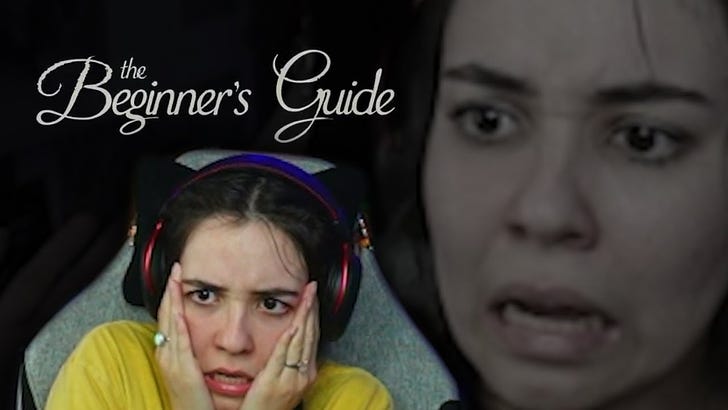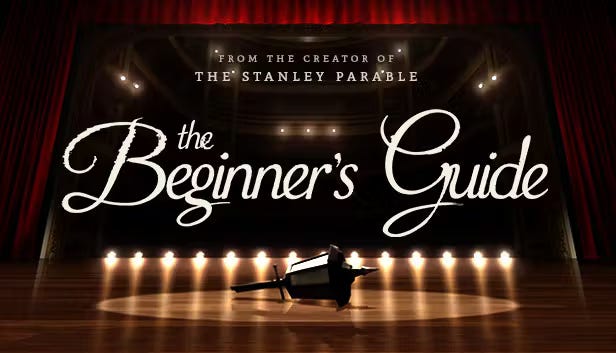I didn’t play this game, and I am happy I refrained because I would have not been able to complete it.
Don’t get me wrong. It’s a good game. A great game even!
I have commitment issues.
And the narrator being overzealous and pretentious made me want to stop on several occasions, just from the beginning, but this game is so short (a grand 1.5 hours, more if and when you revisit this masterpiece) that I would have never picked it up again. Luckily, there is a wealth of YouTubers and streamers who have already gone through this game to give poor souls like myself the experience of playing a game, even when they can’t play or afford to.
We go through several unfinished, unpolished, blocky, colorful, mismatched levels of gameplay. Without the narrator speaking and without his meddling in the minigames we play, the games would not make sense. It is only a valid game and worthwhile for us, because the narrator made it so, because he wants to showcase his friend’s work.
I first stumbled upon this by happenstance, and because a YouTuber I recently discovered (Thor from Pirate Software) highly recommended it. Someone in Thor’s chat was asking him for advice: How do you deal with creative burnout as a game developer? His response? Play “The Beginner’s Guide” by Davey Wreden.
And after watching the entire gameplay and enjoying what it had to offer and the seminal plot twist that forces players to reevaluate themselves, I somewhat agree.
It is definitely one of those games you have to play more than once to fully understand the nuance that is packed into such simple gameplay, such simple game mechanics.
The narrative drives everything, where the aesthetics and mechanics are lacking.
It is about community and creative game development and what it means to be a consumer of that. It asks deeply personal questions about being a creative in a consumerist world. Why do we create? Who are we creating for? Are we still worthy creatives if…we run out of ideas?
At times the game forces the spotlight on its developer, which is a mirrored reflection on the player. Why are we playing this game? Why are we creating?
As a creative, there were moments that absolutely floored me and had tears threatening to fall from my eyes because as flawed as the game looks and is, it is one man’s cry into the void of existence.
It is heartbreaking.
And then infuriating.
I felt so immensely guilty having pseudo-played through this game.
So many myriad and violent emotions that I was not expecting.
And the most beautiful thing?
This is a simple game. It does not have amazing cinematics or graphics or mechanics. Its chronological, compartmentalized timeline showcases the game developer’s development as an all around artist.
That’s it.
With the narration overlaid, this game is not necessarily meant to be played, but to be experienced.
It strips away the idea that only AAA games deserve recognition and clout. As simple as this game looks, it proves that art exists at every level of creative development. It also questions what can be art, but it absolutely forces any budding creative to come face to face with the idea that they can make a game.
They can do creative things.
They can slap together shapes. They can draw or voice act or write something that can have meaning, no matter how much money or experience you have.
As narratively gripping as this game is, what I believe Thor (from Pirate Software) was trying to say is:
DO IT.
Whatever creative pursuit or avenue. However much experience you have. Tell your story, the only way you know how.
As simple or as convoluted as you want.
But make something for yourself.
And if someone out there, even if it’s just one person, if someone enjoys what you’ve created, then you’ve already won.





